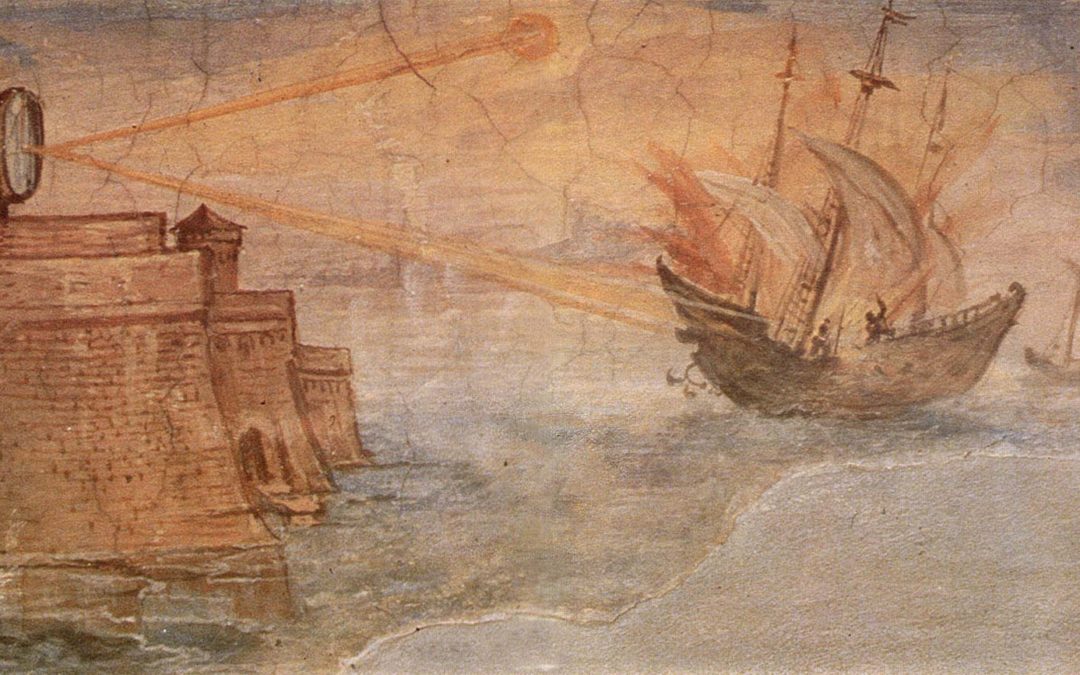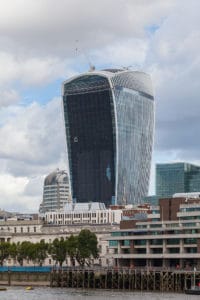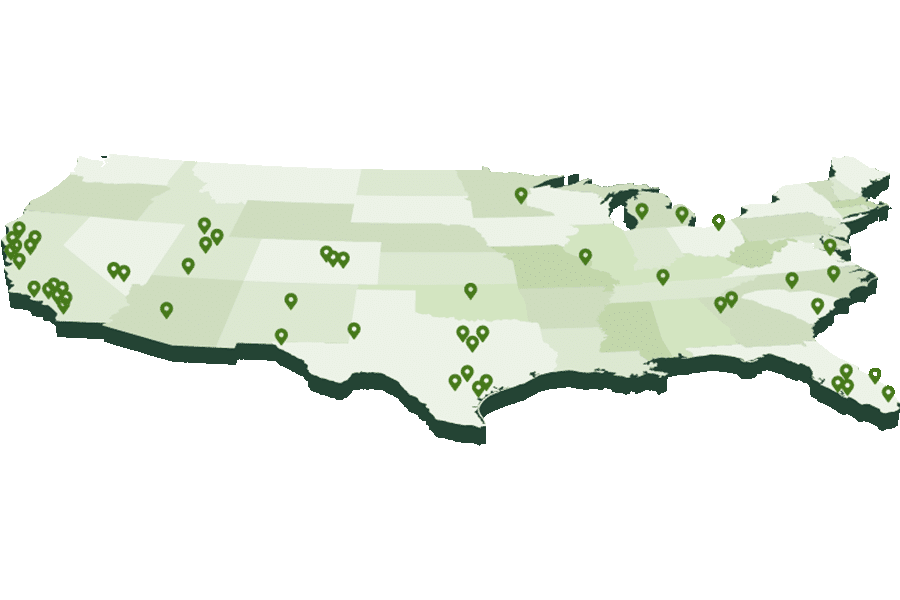When we meet with customers about transforming their yards, sometimes they’ll ask about reflections on artificial grass. What they’re not asking us for is our pleasant musings about past projects. No, what they really want to know about is actual reflections, such as those produced by windows, and how they might affect artificial grass.
Specifically, customers are interested to learn whether reflections can cause artificial grass to melt. The answer, which may surprise you, is yes. And what’s perhaps even more surprising – and even a touch ironic – is that newer, energy-efficient windows may cause the most damage. So let’s take a look at why that is.
A Backyard Death Ray
In 212 B.C. legend has it that Archimedes created a terrifying “death ray” that laid waste to invading Roman ships. The ray was thought to have been produced by essentially scaling up the magnifying glass effect and redirecting concentrated sunlight at the enemy, setting fire to their vessels.
In London there is a skyscraper officially known as 20 Fenchurch Street. Most Britons, however, refer to it as the “Walkie Talkie Building” due its distinctive shape. While not everyone loves the design, even fewer people love the fact that its concave, highly-reflective siding produces street-side temperatures up to 230 °F!
The 37-story Walkie Talkie Building, inadvertently mirroring what Archimedes did, is now more commonly known as the “Walkie Scorchie” or – and this is clever – the “Fryscraper”. The heat from the building was so intense that a doormat at nearby barbershop caught fire. Car owners have also reported that parts of their vehicles have melted as a result of being parked too near the towering inferno.
The Fryscraper is an extreme but illustrative example of what can happen to artificial grass – or any product, for that matter – that is placed near highly-reflective surfaces. In many homes today, the windows are “low-e” or low emissivity. Low-e windows have a “microscopically thin, transparent coating – it is much thinner than a human hair – that reflects long-wave infrared energy (or heat). Some low-e’s also reflect significant amounts of short-wave solar infrared energy.”
Low-e windows are terrific for minimizing the heat that would otherwise enter a building. But, that heat has to go somewhere, so it’s reflected away from the structure. Fortunately, protecting your artificial grass from the ravages of your backyard death ray is really easy.
Protect Your Grass
If you look through your Purchase Green warranty (you know, the industry-best, lifetime one) you’ll find this passage in the section on exclusions:
Damage resulting from localized heating (most often caused by highly reflective surfaces such as energy efficient or reflective windows & glass doors and/or smooth white surfaces). In this scenario the reflected energy usually reaches the turf as a narrow band (10-25cm) of reflected heat and may reach temperatures in excess of the melting point of most plastics used in the synthetic turf industry. This is something to be particularly aware of when installing artificial grass that faces south and that is exposed to sunlight between 11:30 am and 2:00 pm adjacent to highly reflective surfaces.
Artificial grass has a very high melting point – around 200 °F. But as the Fryscraper has shown, reflective surfaces can generate heat in excess of that mark. So, when installing your artificial grass, take note of which direction your windows face. If they face west or (especially) south, consider installing an outdoor solar screen or protective window film. These relatively inexpensive solutions will also contribute to better energy-efficiency in your home. Also, be sure to check neighboring windows to see if they may be the culprit.
You may also take note of where reflections hit the surface and install your artificial grass such that it isn’t bearing the brunt of the reflected heat.
At Purchase Green we want you to enjoy your artificial grass for years to come. So, take the easy, precautionary step of examining your windows prior to installing your grass. If you think they may put your grass at risk, invest in a protective solution. If you have questions or are unsure if your windows might damage your grass, just ask us. We’re happy, helpful and happy to help.






